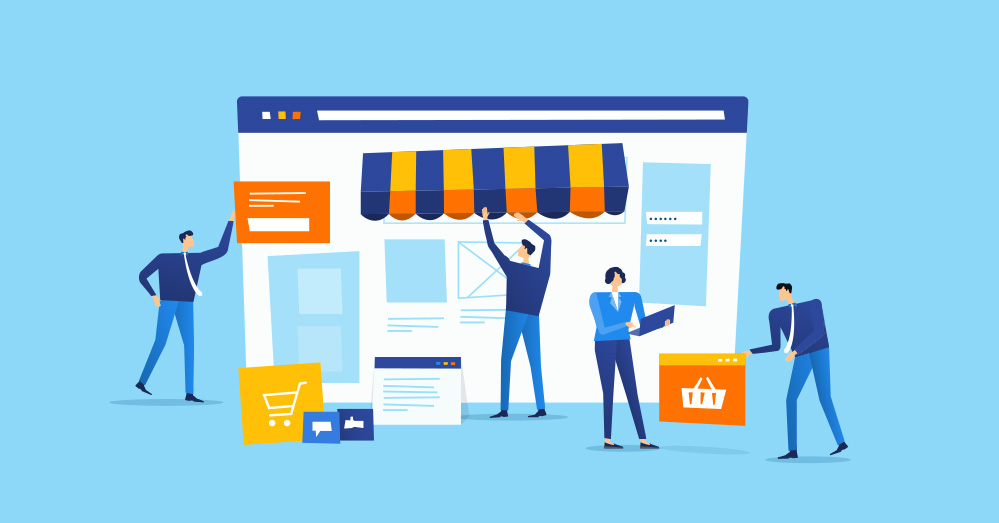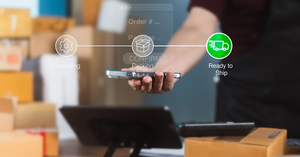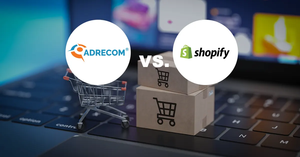
In the ever-changing and dynamic landscape of e-commerce, where fierce competition and rapidly evolving consumer expectations prevail, businesses must embrace agility and foster innovation. Rapid prototype design is one of the most effective methods to achieve this desired level of agility. By rapidly creating and testing prototypes, businesses can gain valuable insights and make informed decisions that align with the ever-evolving demands of the e-commerce sector. Rapid prototyping allows businesses to quickly iterate and refine their products or services, ensuring they meet the needs and preferences of their target audience. This iterative approach saves time and mitigates risks associated with launching products or services that may not resonate with consumers. In the highly competitive e-commerce landscape, embracing rapid prototyping has become crucial for businesses to stay ahead of the curve and deliver exceptional customer experiences. So, let's delve deeper into the world of rapid prototyping and explore its significance in the context of the e-commerce sector.
What is Rapid Prototype Design?
Rapid prototyping is a highly effective design methodology that emphasizes the swift creation of a prototype or preliminary version of a product, website, or application. Businesses can create a functional model that is promptly tested and iterated in real-time by deviating from the traditional approach of waiting for fully developed products. This iterative process allows for a more efficient and dynamic development cycle, enabling businesses to gather valuable feedback and make necessary improvements at an accelerated pace. Ultimately, rapid prototyping catalyzes innovation and empowers businesses to stay ahead of the curve in a rapidly evolving market landscape.
The Importance of Rapid Prototyping in E-commerce
- Quick Feedback Loop: One of the primary benefits of rapid prototyping is the ability to gather feedback early in the design process. By presenting a tangible model to stakeholders or potential customers, businesses can gain valuable insights and make necessary adjustments before investing more time and resources. This iterative approach ensures that the final product meets the needs and expectations of the target audience, leading to higher customer satisfaction and increased chances of success.
- Cost-Efficient: E-commerce mistakes can be extremely costly. Rapid prototyping helps identify potential pitfalls or user experience issues before they become significant problems. By addressing these issues early on, businesses can save significant money in the long run. Moreover, the cost-efficiency of rapid prototyping allows companies to allocate their resources more effectively, ensuring that they invest in the right areas and minimize unnecessary expenses.
- Enhanced User Experience: In the highly competitive world of e-commerce, user experience is king. Rapid prototyping empowers designers to test various user interfaces and functionalities, enabling them to create a final product that is visually appealing but also user-friendly and intuitive. By putting the user at the center of the design process, businesses can ensure that their products meet the expectations and needs of their target audience, ultimately leading to higher engagement, conversion rates, and customer loyalty.
- Facilitates Innovation: The iterative nature of rapid prototyping encourages experimentation and fosters a culture of innovation within businesses. By providing a platform to test out-of-the-box ideas and concepts, rapid prototyping enables companies to push the boundaries of creativity and explore new possibilities. This freedom to innovate without the fear of significant repercussions allows businesses to stay ahead of the curve, differentiate themselves in the market, and drive continuous improvement and growth.
- Speed to Market: In the fast-paced world of e-commerce, being the first to market often gives businesses a competitive edge. Rapid prototyping accelerates product development, allowing companies to quickly iterate on their ideas, validate concepts, and launch new products or features ahead of their competitors. This agility in bringing products to market increases the chances of success and positions businesses as industry leaders, enhancing their brand reputation and capturing market share.
Real World Examples!
In real-world examples, major e-commerce giants such as Amazon and Alibaba have successfully harnessed the power of rapid prototyping to ensure the seamless integration of new platform features. Before implementing a novel checkout process or a cutting-edge recommendation algorithm, these industry leaders employ prototypes to carefully assess user reactions, gather valuable feedback, and diligently refine each feature to meet their user base's evolving needs and preferences. This iterative approach enables them to stay at the forefront of innovation and deliver exceptional user experiences.
In conclusion, rapid prototype design is not just a design methodology; it's a strategic tool that can propel e-commerce businesses forward. In a sector where consumer preferences shift rapidly and competition is just a click away, rapid prototyping offers businesses the agility, efficiency, and innovation required to stay ahead of the curve.
In the ever-evolving world of e-commerce, it's not just about having a product to sell; it's about how quickly and effectively you can adapt to the changing tides. Rapid prototype design ensures businesses remain agile, innovative, and always in tune with their customers' needs.
By embracing rapid prototype design, e-commerce businesses can create a competitive advantage by quickly testing and iterating their ideas, reducing time to market, and minimizing the risk of launching products or features that do not resonate with their target audience. It allows them to gather valuable feedback early on, making informed decisions based on real user insights.
Furthermore, rapid prototype design fosters a culture of innovation within organizations. It encourages cross-functional collaboration and empowers teams to experiment and explore new ideas. This iterative approach promotes creativity and problem-solving, leading to breakthrough innovations that can transform the e-commerce landscape.
In addition, rapid prototype design helps businesses stay ahead of emerging trends and customer demands. Companies can identify and respond to market shifts and evolving customer preferences more effectively by rapidly iterating and testing prototypes. This adaptability is crucial in an industry where trends and customer expectations constantly evolve.
Overall, rapid prototype design is a game-changer in the world of e-commerce. It goes beyond just creating visually appealing designs; it is a strategic approach that drives innovation, customer-centricity, and business growth. By embracing this methodology, e-commerce businesses can stay ahead of the competition, deliver exceptional customer experiences, and thrive in the ever-changing digital landscape.



